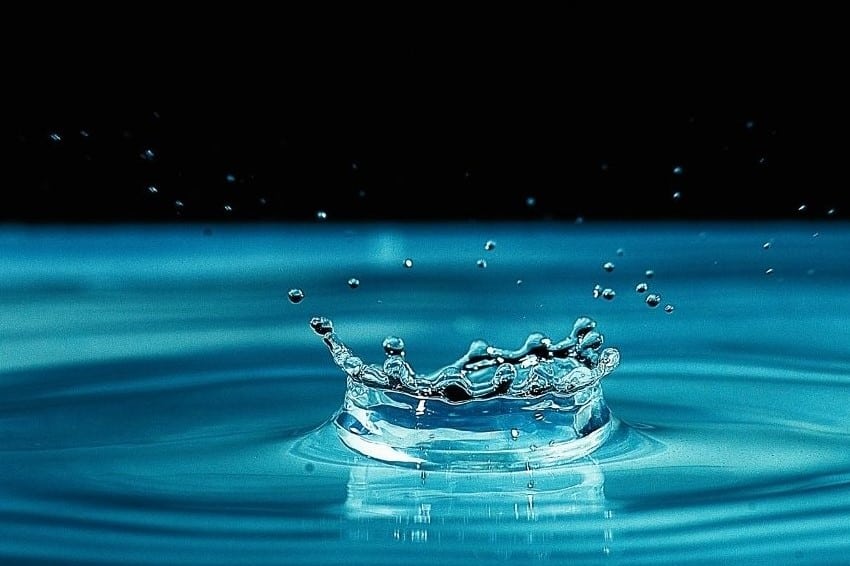Air is not a compound, it’s a mixture of different gases. The atmosphere’s air is made up of nitrogen, oxygen, which is essential for animal and human life, carbon dioxide, water vapor, and trace amounts of other elements (argon, neon, etc.). At higher altitudes, the air includes ozone, helium, and hydrogen.

Table of Contents
Components of Air
| Nitrogen (N2) | 78% |
| Oxygen (O2) | 20% |
| Carbon dioxide (CO2) | 0,03% |
| Water vapor (H2O) | 0,97% |
| Noble gasses | 1% |
Aside from the components mentioned above, air contains other elements as well. However, the proportions of these components are quite low. Aerosols are also present in the atmosphere. These are dust particles blasted off the earth’s surface by wind or generated by volcanic activity. When burning activities occur, ashes and dirt particles are released into the atmosphere.
The composition of the air changes dramatically as one rises in altitude. Over ninety kilometers above the earth’s surface, oxygen molecules disintegrate, leaving just oxygen atoms. Nitrogen molecules degrade over a hundred kilometers above the earth’s surface as well. At this altitude, the air has a different composition than the earth’s normal atmosphere. There is a distinct difference in the atmosphere.
Air is not only found on Earth but is also found in an air layer known as the atmosphere. We can split the atmosphere into layers based on temperature and height. These lines are not clearly separated by straight boundaries; instead, they progressively overlap.
Troposphere
The troposphere is the first layer of air, lying closest to the ground. This layer has a height of 11 kilometers. Temperatures drop by six to seven degrees every kilometer as one moves higher into the troposphere. As a result, the weather on Earth is mostly governed by conditions in the troposphere.
The tropopause is the upper layer of the troposphere. It is eight to ten kilometers above the surface of the Earth near the Antarctic. The tropopause layer, on the other hand, is present seventeen to eighteen kilometers above the earth’s surface at the equator.
Stratosphere
The stratosphere is the second layer of air above the troposphere. Temperatures cease to fall at the lowest section of this layer. Here, the temperature is approximately -55 degrees Celsius.
Temperatures in the upper stratosphere reach 0 degrees Celsius at 47 kilometers above Earth.
Solar radiation produces ozone (O3) from oxygen (O2) in the stratosphere, which is located between twenty and forty kilometers above the earth’s surface. The region of the stratosphere is also referred to as the ozone sphere. Stratopauze is the upper portion of the stratosphere.
Mesosphere
The mesosphere is the third stratum of air. This layer is present 52 kilometers above the earth’s surface. The mesopause is the highest portion of the mesosphere. Temperatures are dropping once more in the mesosphere. The temperature in the mesosphere is about -90 degrees Celsius.
Thermosphere
The thermosphere, the fourth layer of air, is present more than 90 kilometers above the planet. Temperatures climb dramatically in this stratum, with the maximum temperature exceeding 1000 degrees Celsius. Because the density of air in this layer is so low, the forces between molecules almost dissipate.
The lightest molecules can exit through the thermosphere’s lowest layer, the exosphere. Because it blends into space, the exosphere lacks a distinct boundary.
Hemisphere
Because the air composition is largely consistent, the lowest ninety kilometers of the atmosphere are commonly referred to as the hemisphere. Because the air at this level has a drastically different composition, all the air above this layer is referred to as the hydrosphere.
Frequently Asked Questions
1. What is weathering?
Weathering is the physical, chemical, and biological processes that cause or are influenced by wind, water, and climate to disintegrate or modify rock in its natural or original location at or near the Earth’s surface.
2. Is air a homogenous mixture?
Air is a gaseous mixture that is homogenous in composition. Nitrogen, oxygen (which is necessary for animal and human life), carbon dioxide, water vapor, and trace amounts of other elements make up the atmosphere (argon, neon, etc.). The air includes ozone, helium, and hydrogen at higher elevations. Check out the full article “is air a homogenous mixture?”
3. Is air a compound?
The invisible combination of gases that surrounds the Earth is known as “air.” Most organisms require vital elements in the air, such as oxygen and nitrogen, to thrive. Therefore, the air is not a compound, it’s a mixture of different gases.
4. What is the weight of water?
When measured at its maximum density, which occurs at around 4 °C, one liter of water weighs approximately one kilogram. As a result, one-thousandth of a liter of water, also known as one milliliter (1 mL), has a mass of around 1 g, while 1000 liters of water has a mass of about 1000 kg (1 tonne or megagram). Check the full article “Weight of water”
5. How to convert Celsius to Fahrenheit?
To convert temperatures in degrees Fahrenheit to Celsius, subtract 32 from the temperature in degrees Fahrenheit and multiply by.5556 (or 5/9).
6. What is atmospheric pressure?
The atmosphere is a protective layer of air that surrounds our planet. A few hundred kilometers above sea level, it comes to an end.
In the depths of the water, various aquatic animals exist. We reside at the bottom of a huge air sea. This ocean of air puts pressure on things on the earth’s surface, which is known as atmospheric pressure.
Air is made up of a variety of gases of varying concentrations. As we ascend, the density of the material reduces.
At sea level, one atmosphere is defined as the average atmospheric pressure (atm).
7. When does water freeze?
The freezing and melting points of water are both 0 degrees Celsius or 32 degrees Fahrenheit.
The temperature at which water freezes is the solution to the question. It is far more complicated than it appears. Liquid water as cold as-40 degrees Fahrenheit has been observed in clouds, while water as cold as-42 degrees Fahrenheit has been cooled in the lab. Continue reading to learn more about water freezing temperatures, the relationship between water density and temperature, and water’s peculiar cooling behavior. Check out the full article “What Temp Does Water Freeze?”
8. What is the density of water in lb/gal?
At 4 degrees Celsius, the density of water is 8.345 lbs/US gal. This is the same as 1 gram per milliliter (g/ml) or 1 gram per cubic centimeter (g/cm3), rounded up. Check the full article “what is the density of water lb gal?”
9. What are light energy examples?
Light energy examples are light from stars, fire, the sun, glowing coils, electric bulbs, flashlights, lasers, and light from kerosene lamps.
10. What is the density of water in grams per milliliter?
The density of water in g/ml is 0.9998395 at 4.0°C (39.2°F). This is equal to a rounded value of 1 gram per milliliter (g/ml) or 1 gram per cubic centimeter (g/cm3).
More Interesting Topics
- BCl3 Lewis Structure in four simple steps - November 1, 2023
- PH3 Lewis Structure in four simple steps - October 8, 2023
- PF3 Lewis structure in four simple steps - September 24, 2023



